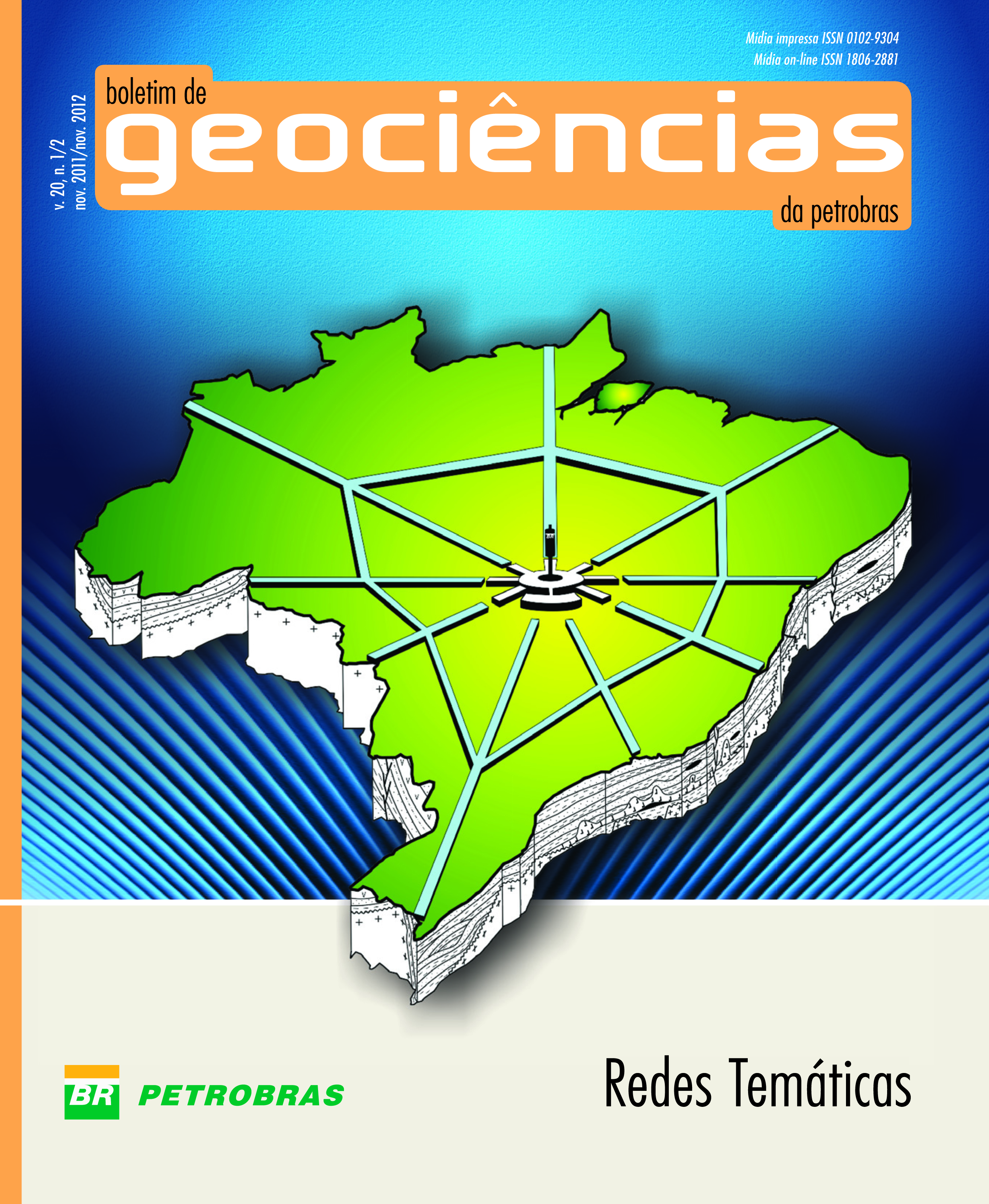Origin and evolution of the mantle rocks of Saint Peter and Saint Paul massif, Equatorial Atlantic Ocean
Keywords:
Saint Peter and Saint Paul Rocks , Equatorial Atlantic Ocean , transform fault , mantle exhumation , geochemistryAbstract
We present results of petrology, geochemistry, structural geology, and geotectonics studies of the Saint Peter and Saint Paul Rocks and the adjacent areas, Equatorial Atlantic Ocean. The islets correspond to the highest point of a morphologic elevation called Saint Peter and Saint Paul Peridotite Ridge, which is made up of abyssal mantle peridotite. The Peridotite Ridge is divided into the north elevation and South Elevation by a graben with east-west direction. The South Elevation is formed by undeformed peridotites strongly serpentinized, and the north elevation, including the islets, is formed by mylonitic peridotite with lower degree of serpentinization. Both types operidotites are enriched in U, Th, Ba, and Light Rare Earth Elements, as well as Noble Gases, mainly He. The enrichment is related to milonitization processes affecting a previously metassomatized mantle, especially at the north elevation. The serpentinization of the non milotinized rocks of the South elevation, are strongly fractured and therefore, allows the introducing of radiogenic incompatible elements such as Rb and U through sea water infiltration.
The Os isotopic ratio suggests existence of materials originated from depleted mantle with model age of 0.32 Ga and 1.1 Ga. The Re, Os, and Pt variation indicate that the mantle was metassomatized by the fluids. The altitude of the Flandrian wave-cut bench and 14C datings of the coral fossils indicate an uplift rate of 1.5mm/year in the last 6.000 years. The tectonic fractures of the islets and the focal mechanism earthquakes indicate an existence of north-south compression stress. This compression is originated from the oblique direction between the transform fault and the strike-slip movement of the South America Plate relative to the Africa Plate. The Equatorial Atlantic Ocean is underlain by low-temperature mantle. The South Elevation from this ridge forms a megamullion. The north elevation was originated from an old transform fault and later submitted to brittle fracturing and intense uplift by compression stress.
Downloads
Published
Issue
Section
License
This license enables reusers to distribute, remix, adapt, and build upon the material in any medium or format, so long as attribution is given to the creator. The license allows for commercial use.



